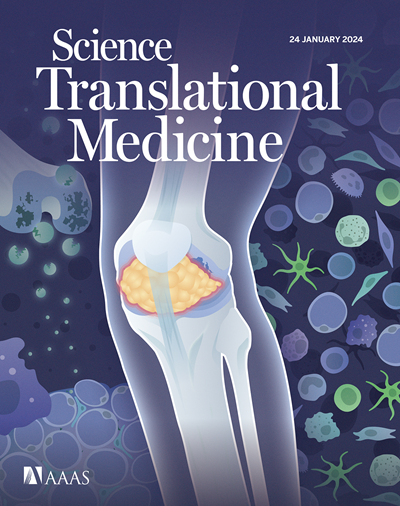铜绿假单胞菌感染可诱发肺移植抗体介导的排斥反应
IF 15.8
1区 医学
Q1 CELL BIOLOGY
引用次数: 0
摘要
病原体如何抑制移植耐受性仍不清楚。在这里,我们发现铜绿假单胞菌感染,而不是其他常见的细菌性呼吸道感染,增加了肺移植受者抗体介导的排斥反应(AMR)的风险。为了探索这种关系,我们对小鼠进行了原位肺移植,感染了铜绿假单胞菌,并观察了AMR的发展。活体双光子显微镜显示铜绿假单胞菌迅速侵入支气管相关淋巴组织,导致急性淋巴细胞毒性,包括抑制AMR所需的叉头盒P3 (Foxp3) + CD4 + T细胞死亡。P. aeruginosa介导的AMR需要III型分泌系统(T3SS)的表达,该系统将外毒素注入细胞质。通过诱变和表位标记实验的结合,我们发现T3SS外毒素T ADP核糖基转移酶活性足以导致移植物居住Foxp3 + CD4 + T细胞凋亡,导致骨髓分化初级反应88 (Myd88)依赖的T-box在T细胞(T-bet)和C-X-C基趋化因子受体3 (CXCR3)阳性生发中心和记忆B细胞中表达,具有高供体抗原亲和力。我们还发现,在诊断为AMR的肺移植受者的活检中,T-bet +和CXCR3 + B细胞升高。在小鼠中,尽管铜绿假单胞菌感染,CXCR3缺陷仅限于B细胞或CXCR3阻断可阻止AMR。我们的工作已经确定了以前未被认识到的细菌毒力在肺移植排斥反应中的作用,并为移植后铜绿假单胞菌感染高风险人群提供了预防AMR的潜在策略。本文章由计算机程序翻译,如有差异,请以英文原文为准。
Pseudomonas aeruginosa infection induces intragraft lymphocytotoxicity that triggers lung transplant antibody-mediated rejection
How pathogens inhibit transplant tolerance remains unclear. Here, we found that Pseudomonas aeruginosa infection, but not other common bacterial respiratory infections, increases antibody-mediated rejection (AMR) risk in recipients of lung transplants. To explore this relationship, we performed orthotopic lung transplants in mice, infected recipients with P. aeruginosa , and observed for the development of AMR. Intravital two-photon microscopy showed that P. aeruginosa rapidly invaded bronchial-associated lymphoid tissues, which resulted in acute lymphocytotoxicity, including the death of forkhead box P3 (Foxp3) + CD4 + T cells that are required to suppress AMR. P. aeruginosa –mediated AMR required expression of the type III secretion system (T3SS), which injects exotoxins into the cell cytoplasm. Through a combination of mutagenesis and epitope tagging experiments, we revealed that T3SS exotoxin T ADP ribosyl-transferase activity was sufficient for graft-resident Foxp3 + CD4 + T cell apoptosis, leading to myeloid differentiation primary response 88 (Myd88)–dependent generation of T-box expressed in T cells (T-bet)– and C-X-C motif chemokine receptor 3 (CXCR3)–positive germinal center and memory B cells with high donor antigen avidity. We also found that T-bet + and CXCR3 + B cells were elevated in biopsies from recipients of lung transplants who were diagnosed with AMR. In mice, CXCR3 deficiency restricted to B cells or CXCR3 blockade prevented AMR despite P. aeruginosa infection. Our work has identified a previously unrecognized role of bacterial virulence in lung allograft rejection and suggests potential strategies to prevent AMR for those at high risk of P. aeruginosa infection after transplant.
求助全文
通过发布文献求助,成功后即可免费获取论文全文。
去求助
来源期刊

Science Translational Medicine
CELL BIOLOGY-MEDICINE, RESEARCH & EXPERIMENTAL
CiteScore
26.70
自引率
1.20%
发文量
309
审稿时长
1.7 months
期刊介绍:
Science Translational Medicine is an online journal that focuses on publishing research at the intersection of science, engineering, and medicine. The goal of the journal is to promote human health by providing a platform for researchers from various disciplines to communicate their latest advancements in biomedical, translational, and clinical research.
The journal aims to address the slow translation of scientific knowledge into effective treatments and health measures. It publishes articles that fill the knowledge gaps between preclinical research and medical applications, with a focus on accelerating the translation of knowledge into new ways of preventing, diagnosing, and treating human diseases.
The scope of Science Translational Medicine includes various areas such as cardiovascular disease, immunology/vaccines, metabolism/diabetes/obesity, neuroscience/neurology/psychiatry, cancer, infectious diseases, policy, behavior, bioengineering, chemical genomics/drug discovery, imaging, applied physical sciences, medical nanotechnology, drug delivery, biomarkers, gene therapy/regenerative medicine, toxicology and pharmacokinetics, data mining, cell culture, animal and human studies, medical informatics, and other interdisciplinary approaches to medicine.
The target audience of the journal includes researchers and management in academia, government, and the biotechnology and pharmaceutical industries. It is also relevant to physician scientists, regulators, policy makers, investors, business developers, and funding agencies.
 求助内容:
求助内容: 应助结果提醒方式:
应助结果提醒方式:


